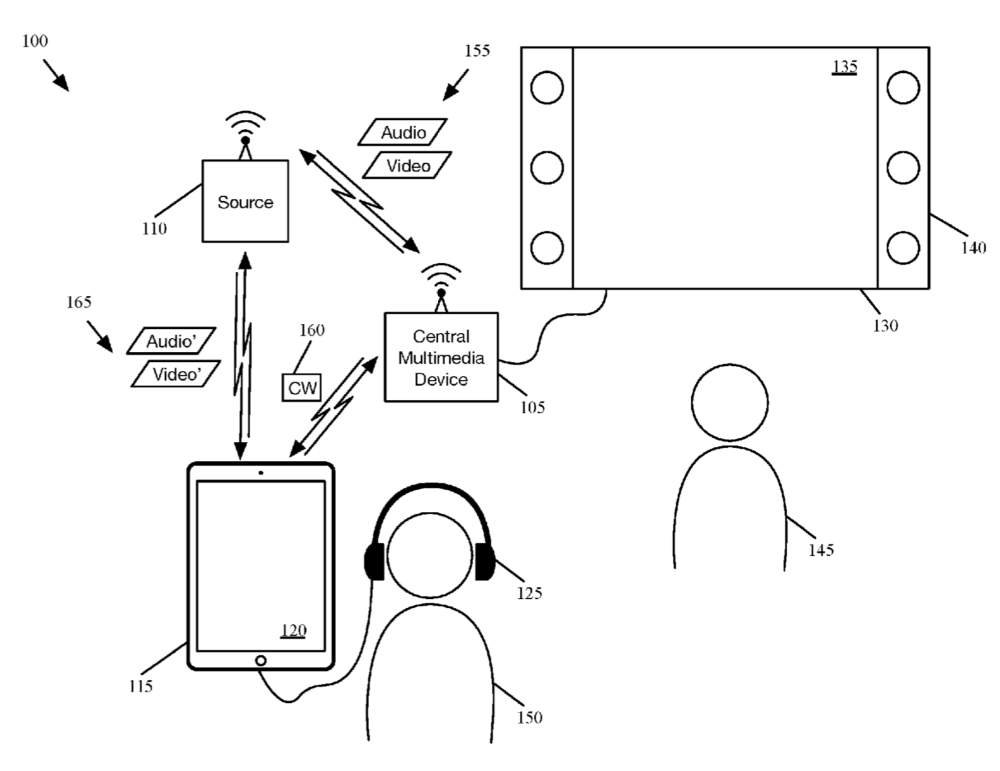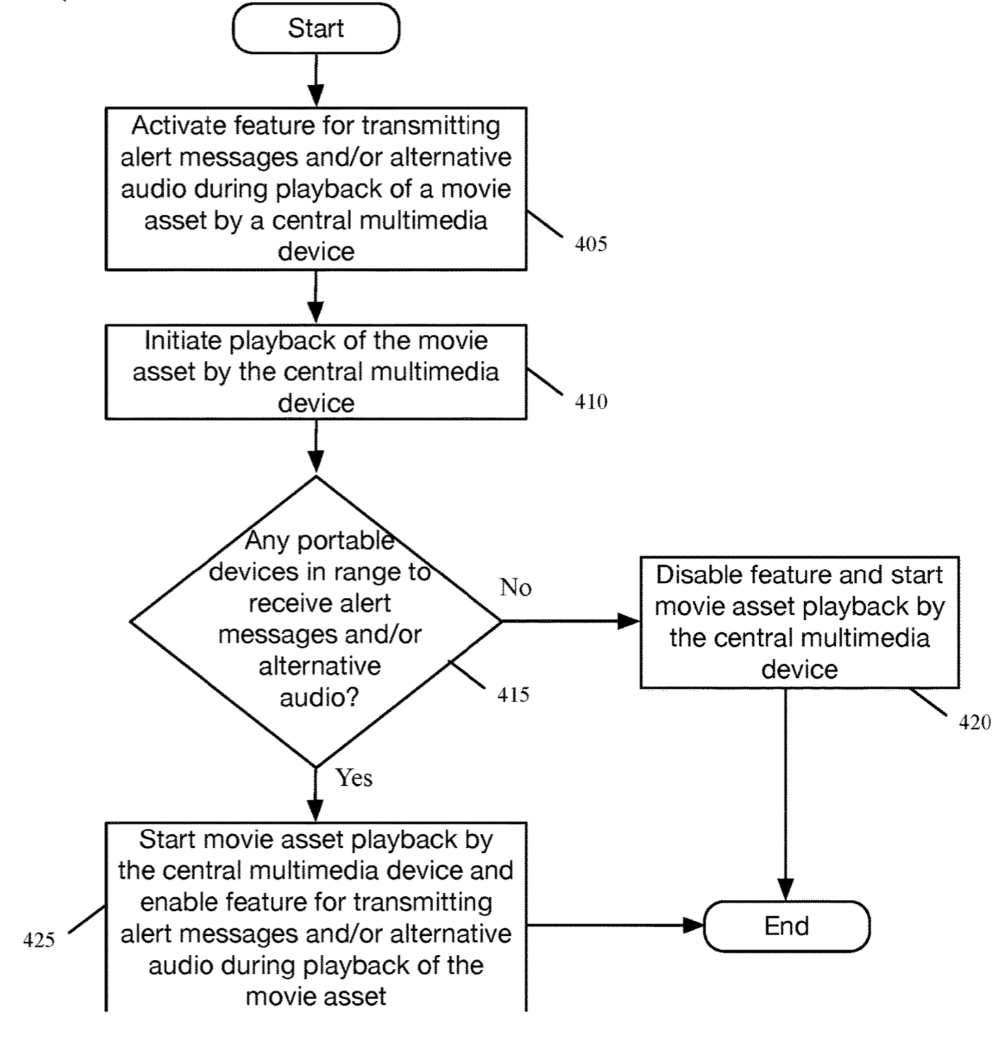Apple has filed for a patent (number 2019029348) for “simultaneous playback for multiple audience members with different visual and audio needs.” It would, apparently, take advantage of its TV app to stream different versions of the same movie, TV show, or video to folks with different needs/wants.

In the patent filing, Apple notes that many households include several devices that are capable of streaming different types of audio-visual content for playback, such as Macs, iPads, iPhones, and the Apple TV set-top box. However, each of the family members may have different audio (or visual) needs.
For example, a family, which may consist of adult parents and young children, may want to watch a movie that includes material inappropriate (e.g., offensive language, violence, and nudity) for children under a certain age. While watching the movie, in order for the parents to shield their children from the inappropriate material, the parents may need to ask their children to avert their eyes or cover their ears. Of course, this isn’t particularly effective since the parents may not know exactly where the inappropriate material is in the movie. Plus, kids peek.
In another example, rather than shielding family members from inappropriate material, a hearing impaired family member may require additional material to be displayed along with the television program. For instance, captions may need to be activated in order for the family member that is hearing impaired to understand what is going on in the television program. Although beneficial for the hearing impaired family member, captions may distracting to the family members that don’t require them.
Finally, a family having different backgrounds and speaking different languages may be required to settle for playing back the audio in the television program in one language, in which some family members are proficient, while others are not. To solve this problem, most entertainment systems in the marketplace today allow users to turn on subtitles in different languages during playback.

Apple says that, although helpful, this limits the amount of languages to two (one audible and one visual), thereby leaving the audience family member that is proficient in a third language struggling to understand what is being said in the television program.
Apple’s idea: video content would be streamed by a central multimedia device for simultaneous playback on a given playback device (e.g., a television set having a display screen and built-in loudspeakers) and on a portable playback device (a Mac, iPhone, or iPad) of a particular audience member. The latter would be adjusted to suit the different needs of the particular audience member watching or listening using the portable device.
This is accomplished through the use of alert messages (e.g., code words) that are wirelessly transmitted by the central multimedia device during playback of the asset. An alert message may describe an upcoming (future) segment of the asset that’s going to be played back. The description may identify the current playback of the asset (e.g., title of the feature film, or a playback session identifier), indicate when the upcoming segment is to be played (e.g., using time markers for the beginning and end of the segment), and identify the type of content in the upcoming segment (also referred to here as content description, e.g., whether the segment includes violence, offensive language, and nudity.)
The portable device that’s within a transmission or reception range of the messages and that is willing to adjust its playback of the asset may receive the alert message from the central media device. The portable device could “examines” the message and on that basis determines which version of the asset it needs to play the upcoming segment.
Once the alternate version of the upcoming segment is received, the portable device may replace an original or default version of the upcoming segment with the alternate version. To ensure continued synchronization of the playback across the different devices, the portable device may use time markers contained in the alert message that indicate the start and stop of the upcoming segment, and where the time markers are interpreted by the portable device based on its internal clock having been previously synchronized with an internal clock of the central media device.
This process may be repeated as needed during the playback of the asset, to replace additional, selected upcoming segments of the asset. In this way, an audience member may watch an original version of the asset, while another audience member seamlessly sees and/or hears a different version of the asset that is more suitable for the needs of that audience member.
Of course, Apple files for — and is granted — lots of patents by the U.S. Patent & Trademark Office. Many are for inventions that never see the light of day. However, you never can tell which ones will materialize in a real product.



